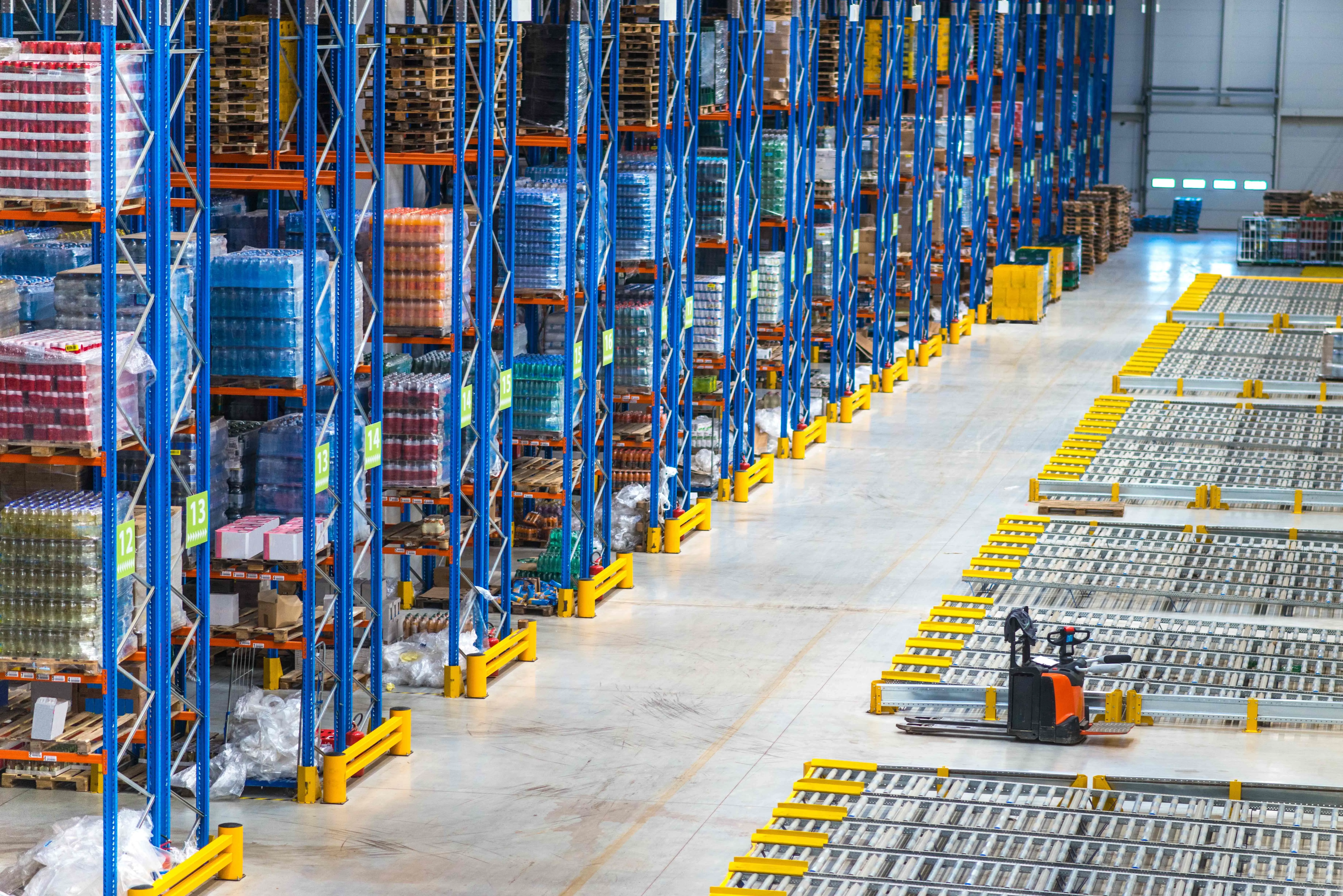2024's Best Tools for Optimizing Supply Chains

In 2024, supply chain optimization becomes crucial for businesses aiming to thrive. You witness rapid technological advancements reshaping supply chains. These changes demand that you adopt the best tools to maintain a competitive edge. By leveraging cutting-edge solutions, you can enhance efficiency and streamline operations. Staying informed about these innovations ensures your business remains agile and responsive to market demands. Embrace these tools to optimize your supply chain and secure your position in the industry.
Foundational Tools for Supply Chain Optimization
Inventory Management Software
Key Features
Inventory management software plays a pivotal role in optimizing supply chains. You gain real-time visibility into your inventory, which helps you meet customer demand accurately. This software automates stock-related processes and provides valuable insights into inventory levels. By leveraging artificial intelligence and machine learning algorithms, it analyzes order data, sales history, and inventory levels from multiple sources. This analysis forecasts demand trends and offers insights that improve inventory management decisions. Key features include:
Real-Time Tracking: Stay updated on inventory levels to prevent overstocking or stock-outs.
Advanced Analytics: Use data to optimize stock availability and identify sales trends.
Predictive Tools: Forecast demand using machine learning algorithms to analyze past data and current market trends.
Supplier Management: Enhance communication with suppliers to streamline operations.
Benefits for Supply Chain Efficiency
Implementing inventory management software enhances supply chain efficiency significantly. You can optimize stock availability, which reduces the risk of overstocking or stockouts. This leads to improved customer satisfaction as orders are fulfilled promptly. The software's analytical capabilities help you identify sales trends, boosting overall profitability. By automating routine tasks, you free up resources to focus on strategic initiatives. The benefits include:
Improved Customer Experience: Deliver orders quickly and accurately.
Cost Reduction: Minimize excess inventory and associated costs.
Enhanced Decision-Making: Use insights to make informed inventory management decisions.
Increased Profitability: Optimize operations to boost overall profitability.
Demand Forecasting Tools
Predictive Analytics Capabilities
Demand forecasting tools are essential for maintaining optimal inventory levels. You can prevent both shortages and overstocking by accurately predicting demand fluctuations. These tools leverage massive amounts of data collected by supply chain management systems. Predictive analytics capabilities enable you to forecast demand with high accuracy. Key capabilities include:
Data-Driven Insights: Analyze sales data and market trends to forecast demand accurately.
AI and Machine Learning: Use advanced algorithms to predict demand fluctuations.
Scenario Planning: Assess various scenarios to plan for different market conditions.
Impact on Inventory and Production Planning
Accurate demand forecasting has a profound impact on inventory and production planning. You can align production schedules with anticipated demand, reducing waste and optimizing resource utilization. This alignment ensures that you maintain optimal inventory levels, minimizing the financial burdens of excess stock or unmet demand. The impact includes:
Optimized Inventory Levels: Maintain the right amount of stock to meet demand.
Efficient Production Planning: Align production schedules with demand forecasts.
Reduced Waste: Minimize excess production and associated costs.
Improved Resource Utilization: Use resources effectively to enhance supply chain efficiency.
By integrating these foundational tools into your supply chain operations, you can achieve greater efficiency and responsiveness to market demands.
Advanced Technologies in Supply Chain Management

Artificial Intelligence and Machine Learning
Artificial Intelligence (AI) and Machine Learning (ML) are transforming supply chain management. These technologies automate routine tasks, enhancing efficiency and accuracy.
Automation of Routine Tasks
AI and ML automate repetitive tasks, freeing up valuable time and resources. You can rely on these technologies to handle data entry, order processing, and inventory updates. This automation reduces human error and increases productivity. According to a study by McKinsey & Company, AI-equipped supply chains are over 67% more effective, with reduced risk and lower overall costs. By automating routine tasks, you can focus on strategic initiatives that drive growth.
Enhancing Decision-Making Processes
AI and ML enhance decision-making processes by providing data-driven insights. These technologies analyze vast amounts of data to identify patterns and trends. You gain valuable insights into demand forecasting, inventory management, and risk assessment. AI-driven supply chain optimization software empowers you to AI and ML enhance decision-making, mitigating risks associated with inventory imbalances. By leveraging AI and ML, you can make informed decisions that improve supply chain resilience and efficiency.
Internet of Things (IoT) Solutions
The Internet of Things (IoT) revolutionizes supply chain management by providing real-time tracking and monitoring capabilities. IoT solutions improve supply chain visibility, enabling you to respond quickly to changes and disruptions.
Real-Time Tracking and Monitoring
IoT devices offer real-time tracking and monitoring of goods throughout the supply chain. You can track shipments, monitor environmental conditions, and ensure timely deliveries. This real-time data enhances transparency and accountability. By integrating IoT solutions, you can optimize logistics and reduce delays. The ability to monitor shipments in real-time ensures that you meet customer expectations and maintain a competitive edge.
Improving Supply Chain Visibility
IoT solutions improve supply chain visibility by providing comprehensive data on every aspect of the supply chain. You gain insights into inventory levels, transportation routes, and supplier performance. This visibility allows you to identify bottlenecks and inefficiencies. By addressing these issues, you can streamline operations and enhance overall supply chain performance. Technologies like AI, ML, and IoT IoT solutions improve supply chain visibility, and visibility across the supply chain. Embracing IoT solutions ensures that you stay ahead in a rapidly evolving market.
By integrating AI, ML, and IoT into your supply chain management, you can achieve greater efficiency, visibility, and resilience. These advanced technologies empower you to optimize operations and respond effectively to market demands.
JUSDA's Role in Supply Chain Optimization
JusLink Intelligent Supply Chain
JUSDA's JusLink Intelligent Supply Chain stands at the forefront of supply chain optimization. By integrating IoT, cloud computing, and big data, you gain unparalleled visibility and control over your operations. This integration allows you to monitor inventory levels, track shipments, and analyze data in real-time. The result is a seamless flow of information that enhances decision-making and boosts efficiency.
Integration of IoT, Cloud Computing, and Big Data
With IoT devices, you can track goods throughout the supply chain. Real-time data from these devices feeds into cloud-based systems, providing you with instant access to critical information. Big data analytics then processes this information, offering insights into trends and potential issues. This integration empowers you to make proactive decisions, ensuring smooth operations and minimizing disruptions.
Enhancing Collaboration and Information Sharing
JUSDA's platform fosters collaboration among supply chain partners. By sharing information in real-time, you can coordinate efforts and align strategies with suppliers and distributors. This collaboration reduces delays and enhances overall supply chain performance. You benefit from improved communication, which leads to faster problem resolution and increased trust among partners.
Comprehensive Foreign Trade Services
JUSDA excels in providing comprehensive foreign trade services that streamline customs clearance and trade compliance. These services are crucial for businesses engaged in global trade, as they simplify complex processes and reduce the risk of delays.
Streamlining Customs Clearance and Trade Compliance
Navigating customs regulations can be challenging. JUSDA's expertise in this area ensures that you comply with all necessary requirements, avoiding costly penalties and delays. Their services include documentation preparation, tariff classification, and duty management. By streamlining these processes, you can focus on expanding your market reach without worrying about regulatory hurdles.
Benefits for Global Trade Efficiency
Efficient trade operations translate to cost savings and improved competitiveness. JUSDA's foreign trade services enhance your ability to move goods across borders swiftly and efficiently. You experience reduced lead times and lower logistics costs, which contribute to a stronger bottom line. By leveraging JUSDA's expertise, you position your business for success in the global marketplace.
Collaborative Platforms for Supply Chain Partners
Cloud-Based Collaboration Tools
Cloud-based collaboration tools revolutionize how you communicate and coordinate with supply chain partners. These tools provide a centralized platform where you can share information, documents, and updates in real-time. This immediate access to data ensures that all partners stay informed and aligned with the supply chain objectives.
Facilitating Communication and Coordination
Effective communication is crucial for supply chain optimization. Cloud-based tools facilitate seamless interaction among partners. You can use these platforms to schedule meetings, share files, and discuss strategies without the need for physical presence. This ease of communication reduces misunderstandings and accelerates decision-making processes. For instance, you can quickly address issues like shipment delays or inventory shortages by coordinating with relevant stakeholders through these tools.
Benefits for Multi-Partner Supply Chains
In multi-partner supply chains, coordination becomes complex. Cloud-based collaboration tools simplify this complexity by providing a unified interface for all partners. You gain the ability to track progress, assign tasks, and monitor performance metrics. This transparency enhances accountability and fosters trust among partners. Additionally, these tools support scalability, allowing you to integrate new partners effortlessly as your supply chain expands.
Blockchain for Supply Chain Transparency
Blockchain technology offers a transformative approach to achieving transparency in supply chains. By creating a decentralized and immutable ledger, blockchain ensures that all transactions and data exchanges are secure and verifiable. This technology addresses common challenges such as data integrity and documentation accuracy.
Ensuring Data Integrity and Security
Blockchain's decentralized nature guarantees data integrity. Each transaction gets recorded in a block, which links to the previous one, forming a chain. This structure makes it nearly impossible to alter data without detection. You can trust that the information shared among partners remains accurate and tamper-proof. This security is particularly beneficial in industries where compliance and traceability are critical.
Streamlining Transactions and Documentation
Blockchain streamlines transactions by automating processes through smart contracts. These self-executing contracts trigger actions based on predefined conditions. For example, a smart contract can automatically release payment once a shipment reaches its destination. This automation reduces the need for intermediaries and minimizes delays. Furthermore, blockchain simplifies documentation by storing all records in a single, accessible location. You can easily verify the authenticity of documents, such as certificates of origin or quality assurance reports, enhancing overall supply chain efficiency.
Case Studies: A study on blockchain in supply chains highlights its transformative power. Companies using blockchain report improved transparency and reduced fraud. Another case study on IoT container tracking platforms illustrates how modern technology optimizes traditional supply chain methods, further enhancing efficiency.
By adopting cloud-based collaboration tools and blockchain technology, you can significantly enhance your supply chain operations. These platforms offer innovative solutions that improve communication, transparency, and efficiency, ensuring your supply chain remains competitive and resilient.
Sustainability and Green Supply Chain Tools

Carbon Footprint Tracking Software
Measuring and Reducing Environmental Impact
You can use carbon footprint tracking software to measure your supply chain's environmental impact. This software helps you identify areas where you can reduce emissions. By analyzing data on energy consumption, transportation, and production processes, you gain insights into your carbon footprint. You can then implement strategies to minimize emissions, such as optimizing transportation routes or using renewable energy sources. This proactive approach not only benefits the environment but also enhances your brand's reputation as a responsible business.
Aligning with Corporate Sustainability Goals
Aligning your supply chain operations with corporate sustainability goals becomes easier with carbon footprint tracking software. You can set specific targets for reducing emissions and monitor progress in real-time. This alignment ensures that your supply chain contributes to broader sustainability initiatives. By achieving these goals, you demonstrate your commitment to environmental stewardship, which can attract eco-conscious customers and investors. Additionally, reducing your carbon footprint often leads to cost savings, as you optimize resource use and improve operational efficiency.
Circular Economy Platforms
Promoting Resource Efficiency
Circular economy platforms play a crucial role in promoting resource efficiency within your supply chain. These platforms facilitate the reuse, recycling, and repurposing of materials, reducing the need for new resources. By participating in a circular economy, you can minimize waste and extend the lifecycle of products. This approach not only conserves natural resources but also reduces costs associated with raw material procurement. You can collaborate with other businesses to create closed-loop systems, where waste from one process becomes input for another.
Benefits for Waste Reduction and Recycling
Implementing circular economy platforms offers significant benefits for waste reduction and recycling. You can track materials throughout their lifecycle, ensuring that they are reused or recycled at the end of their useful life. This tracking reduces landfill waste and lowers disposal costs. By adopting circular practices, you contribute to a more sustainable supply chain and help preserve the environment for future generations. Additionally, you can enhance your company's image by showcasing your commitment to sustainability, which can lead to increased customer loyalty and market differentiation.
Practical Considerations for Implementing Supply Chain Tools
When you decide to implement supply chain tools, it's crucial to consider several practical aspects. These considerations ensure that the tools align with your business needs and objectives, ultimately enhancing supply chain optimization.
Assessing Business Needs and Objectives
Identifying Key Areas for Improvement
To begin, you must identify the key areas within your supply chain that require improvement. This step involves analyzing current processes and pinpointing inefficiencies. You should ask yourself questions like: Where do delays occur? Which processes consume the most resources? By answering these questions, you can focus on areas that will benefit most from optimization tools.
Aligning Tools with Strategic Goals
Once you've identified areas for improvement, align the selected tools with your strategic goals. Consider how each tool will contribute to achieving these objectives. For example, if your goal is to reduce lead times, choose tools that enhance communication and coordination among supply chain partners. This alignment ensures that the tools not only address immediate issues but also support long-term business success.
Overcoming Implementation Challenges overcoming implementation challenges
Change Management Strategies
Implementing new tools often brings challenges, particularly in change management. You need to develop strategies that facilitate a smooth transition. Communicate the benefits of the new tools to your team and involve them in the implementation process. Encourage feedback and address concerns promptly. By fostering a culture of openness and collaboration, you can minimize resistance and ensure a successful rollout.
Ensuring User Adoption and Training
User adoption is critical for the success of any new tool. Provide comprehensive training to ensure that your team understands how to use the tools effectively. Offer ongoing support and resources to address any issues that arise. By investing in training, you empower your team to leverage the full potential of the tools, leading to improved supply chain optimization.
Tip: Regularly review the performance of the implemented tools and gather feedback from users. This practice helps you make necessary adjustments and continuously improve your supply chain processes.
By carefully considering these practical aspects, you can successfully implement supply chain tools that enhance efficiency and align with your strategic goals. This approach not only optimizes your supply chain but also positions your business for sustained growth and competitiveness.

JUSDA Solutions
To provide you with professional solutions and quotations.
Choosing the right tools for supply chain optimization is crucial. You need to stay informed about emerging technologies like AI, IoT, and blockchain. These innovations enhance efficiency, visibility, and security. As supply chains become more complex, leveraging these tools ensures you remain competitive. The future of supply chain management is digital. By adopting advanced technologies, you can transform operations from reactive to predictive. This shift allows you to anticipate disruptions and meet customer demands effectively. Embrace these changes to secure your place in the evolving landscape of 2024.
See Also
Tomorrow's Logistics Revolution: AI Transforming Supply Chain
AI Innovations: Unleashing Efficiency in the Supply Chain
Revealing 5 Techniques for Optimizing the Supply Chain Innovatively
5 Impactful Trends Shaping the Efficiency of Future Supply Chains
Unveiling Insider Secrets: Efficiency Boost in Supply Chain Logistics
